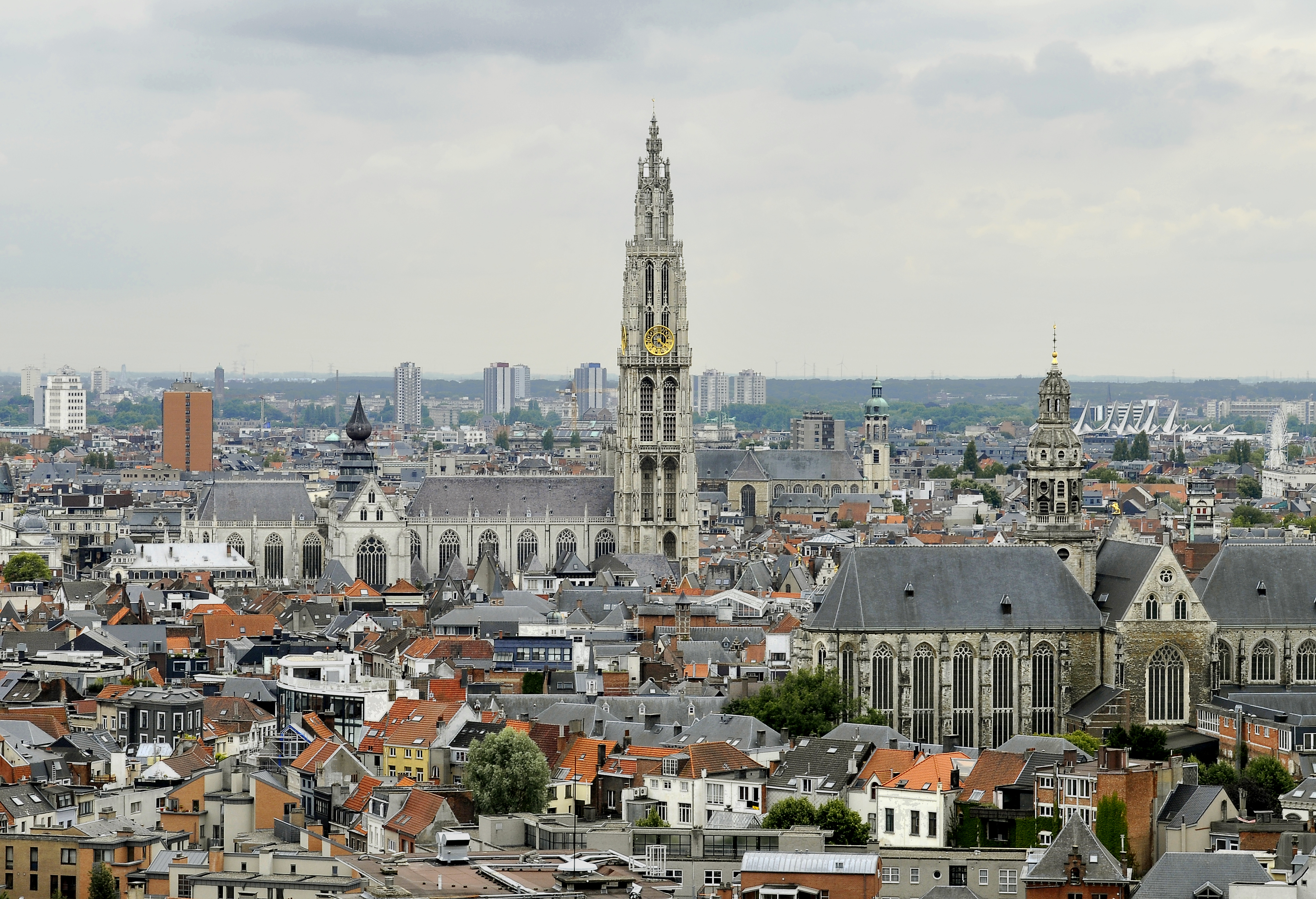|
List Of Energy Abbreviations
This is a list of acronyms found in the context of energy issues. A *AAQS— Ambient Air Quality Standards (environment) (US) *AAU—Assigned amount units (measurement) *ABT— Availability based tariff (electricity) *ABF—Aquatic Base Flow (Hydropower) (electricity) *AC—Alternating current *ACA—Annual Charge Adjustment (electricity) *ACE—Area Control Error (electricity) *ACEEE—American Council for an Energy-Efficient Economy *ACRS— Accelerated Cost Recovery System (finance) *ADITC—Accumulated Deferred Investment Tax Credit (policy) *ADR—Asset Depreciation Range (finance) *AEP— American Electric Power (electricity) *AESO— Alberta Electric System Operator *AFE—Authority for Expenditure or Authorization for Expenditure *AFUDC—allowance for funds used during construction *AFV—Alternative fuel vehicle *AGA— American Gas Association *AGC—Automatic generation control *AGD—Associated Gas Distributors (US) *AIEE— American Institute of Electrical Enginee ... [...More Info...] [...Related Items...] OR: [Wikipedia] [Google] [Baidu] |
National Ambient Air Quality Standards
The U.S. National Ambient Air Quality Standards (NAAQS, pronounced ) are limits on atmospheric concentration of six pollutants that cause smog, acid rain, and other health hazards. Established by the United States Environmental Protection Agency (EPA) under authority of the Clean Air Act (42 U.S.C. 7401 et seq.), NAAQS is applied for outdoor air throughout the country. The six criteria air pollutants (CAP), or criteria pollutants, for which limits are set in the NAAQS are ozone (O3), atmospheric particulate matter, lead, carbon monoxide (CO), sulfur oxides (SOx), and nitrogen oxides (NOx). These are typically emitted from many sources in industry, mining, transportation, electricity generation and agriculture. In many cases they are the products of the combustion of fossil fuels or industrial processes. The National Emissions Standards for Hazardous Air Pollutants cover many other chemicals, and require the maximum achievable reduction that the EPA determines is feasibl ... [...More Info...] [...Related Items...] OR: [Wikipedia] [Google] [Baidu] |
Barrel Per Day
A barrel is one of several units of volume applied in various contexts; there are dry barrels, fluid barrels (such as the U.K. beer barrel and U.S. beer barrel), oil barrels, and so forth. For historical reasons the volumes of some barrel units are roughly double the volumes of others; volumes in common use range approximately from . In many connections the term is used almost interchangeably with ''barrel''. Since medieval times the term as a unit of measure has had various meanings throughout Europe, ranging from about 100 litres to about 1,000 litres. The name was derived in medieval times from the French , of unknown origin, but still in use, both in French and as derivations in many other languages such as Italian, Polish, and Spanish. In most countries such usage is obsolescent, increasingly superseded by SI units. As a result, the meaning of corresponding words and related concepts (vat, cask, keg etc.) in other languages often refers to a physical container r ... [...More Info...] [...Related Items...] OR: [Wikipedia] [Google] [Baidu] |
Best Available Control Technology
A State Implementation Plan (SIP) is a United States state plan for complying with the federal Clean Air Act, administered by the Environmental Protection Agency (EPA). The SIP, developed by a state agency and approved by EPA, consists of narrative, rules, technical documentation, and agreements that an individual state will use to control and clean up polluted areas. Lowest achievable emissions rate The Lowest achievable emissions rate (LAER) is used by the EPA to determine if emissions from a new or modified major stationary source are acceptable under SIP guidelines. LAER standards are required when a new stationary source is located in a non-attainment air-quality region. It is the most stringent air pollution standard above the best available control technology and reasonably available control technology standards. Best available control technology Best available control technology (BACT) is a pollution control standard mandated by the Clean Air Act: :..an emission limitatio ... [...More Info...] [...Related Items...] OR: [Wikipedia] [Google] [Baidu] |
Automatic Voltage Regulator
A voltage regulator is a system designed to automatically maintain a constant voltage. A voltage regulator may use a simple feed-forward design or may include negative feedback. It may use an electromechanical mechanism, or electronic components. Depending on the design, it may be used to regulate one or more Alternating current, AC or Direct current, DC voltages. Electronic voltage regulators are found in devices such as Power supply unit (computer), computer power supplies where they stabilize the DC voltages used by the processor and other elements. In Alternator (automotive), automobile alternators and central power station generator plants, voltage regulators control the output of the plant. In an electric power distribution system, voltage regulators may be installed at a substation or along distribution lines so that all customers receive steady voltage independent of how much power is drawn from the line. Electronic voltage regulators A simple voltage/current regulator c ... [...More Info...] [...Related Items...] OR: [Wikipedia] [Google] [Baidu] |
American Society For Testing And Materials
ASTM International, formerly known as American Society for Testing and Materials, is an international standards organization that develops and publishes voluntary consensus technical standards for a wide range of materials, products, systems, and services. Some 12,575 ASTM voluntary consensus standards operate globally. The organization's headquarters is in West Conshohocken, Pennsylvania, about northwest of Philadelphia. It is founded in 1902 as the American Section of the International Association for Testing Materials (see also International Organization for Standardization). History A group of scientists and engineers, led by Charles Dudley, formed ASTM in 1898 to address the frequent rail breaks affecting the fast-growing railroad industry. The group developed a standard for the steel used to fabricate rails. Originally called the "American Society for Testing Materials" in 1902, it became the "American Society for Testing And Materials" in 1961. In 2001, ASTM offic ... [...More Info...] [...Related Items...] OR: [Wikipedia] [Google] [Baidu] |
Alliance To Save Energy
The Alliance to Save Energy is a bipartisan, nonprofit coalition of business, government, environmental, and consumer groups based in Washington, D.C. The Alliance states that it advocates for "energy-efficiency policies that minimize costs to society and individual consumers, and that lessen greenhouse gas emissions and their impact on the global climate." The Alliance's chief activities include public relations, research, and lobbying to change U.S. energy policy. The Alliance was established on March 18, 1977, with the support of then U.S. President Jimmy Carter. It was the initiative of Senators Charles Percy (R-Ill.) and Hubert Humphrey (D-Minn.). Member organizations The Alliance includes more than 100 organizations committed to energy efficiency as a primary way to achieve the nation's environmental, economic, energy security, and affordable housing goals. Members include a wide variety of companies, nonprofits, industry groups, and government organizations. Federal pol ... [...More Info...] [...Related Items...] OR: [Wikipedia] [Google] [Baidu] |
Antwerp
Antwerp (; nl, Antwerpen ; french: Anvers ; es, Amberes) is the largest city in Belgium by area at and the capital of Antwerp Province in the Flemish Region. With a population of 520,504,Statistics Belgium; ''Loop van de bevolking per gemeente'' (Excel file) Population of all municipalities in Belgium, . Retrieved 1 November 2017. it is the most populous municipality in Belgium, and with a metropolitan population of around 1,200,000 people, it is the second-largest ... [...More Info...] [...Related Items...] OR: [Wikipedia] [Google] [Baidu] |
Rotterdam
Rotterdam ( , , , lit. ''The Dam on the River Rotte'') is the second largest city and municipality in the Netherlands. It is in the province of South Holland, part of the North Sea mouth of the Rhine–Meuse–Scheldt delta, via the ''"New Meuse"'' inland shipping channel, dug to connect to the Meuse first, but now to the Rhine instead. Rotterdam's history goes back to 1270, when a dam was constructed in the Rotte. In 1340, Rotterdam was granted city rights by William IV, Count of Holland. The Rotterdam–The Hague metropolitan area, with a population of approximately 2.7 million, is the 10th-largest in the European Union and the most populous in the country. A major logistic and economic centre, Rotterdam is Europe's largest seaport. In 2020, it had a population of 651,446 and is home to over 180 nationalities. Rotterdam is known for its university, riverside setting, lively cultural life, maritime heritage and modern architecture. The near-complete destru ... [...More Info...] [...Related Items...] OR: [Wikipedia] [Google] [Baidu] |
Amsterdam
Amsterdam ( , , , lit. ''The Dam on the River Amstel'') is the Capital of the Netherlands, capital and Municipalities of the Netherlands, most populous city of the Netherlands, with The Hague being the seat of government. It has a population of 907,976 within the city proper, 1,558,755 in the City Region of Amsterdam, urban area and 2,480,394 in the Amsterdam metropolitan area, metropolitan area. Located in the Provinces of the Netherlands, Dutch province of North Holland, Amsterdam is colloquially referred to as the "Venice of the North", for its large number of canals, now designated a World Heritage Site, UNESCO World Heritage Site. Amsterdam was founded at the mouth of the Amstel River that was dammed to control flooding; the city's name derives from the Amstel dam. Originally a small fishing village in the late 12th century, Amsterdam became a major world port during the Dutch Golden Age of the 17th century, when the Netherlands was an economic powerhouse. Amsterdam is th ... [...More Info...] [...Related Items...] OR: [Wikipedia] [Google] [Baidu] |
Demand Response
Demand response is a change in the power consumption of an electric utility customer to better match the demand for power with the supply. Until the 21st century decrease in the cost of pumped storage and batteries electric energy could not be easily stored, so utilities have traditionally matched demand and supply by throttling the production rate of their power plants, taking generating units on or off line, or importing power from other utilities. There are limits to what can be achieved on the supply side, because some generating units can take a long time to come up to full power, some units may be very expensive to operate, and demand can at times be greater than the capacity of all the available power plants put together. Demand response seeks to adjust the demand for power instead of adjusting the supply. Utilities may signal demand requests to their customers in a variety of ways, including simple off-peak metering, in which power is cheaper at certain times of the d ... [...More Info...] [...Related Items...] OR: [Wikipedia] [Google] [Baidu] |
American Petroleum Institute
The American Petroleum Institute (API) is the largest U.S. trade association for the oil and natural gas industry. It claims to represent nearly 600 corporations involved in production, refinement, distribution, and many other aspects of the petroleum industry. Much of its work has been dedicated to the advancement of climate change denial and blocking of climate legislation to defend the interests of its constituent organizations. The association describes its mission as "to promote safety across the industry globally and influence public policy in support of a strong, viable U.S. oil and natural gas industry". API's chief functions on behalf of the industry include advocacy, negotiation and lobbying with governmental, legal, and regulatory agencies; research into economic, toxicological, and environmental effects; establishment and certification of industry standards; and education outreach. API both funds and conducts research related to many aspects of the petrol ... [...More Info...] [...Related Items...] OR: [Wikipedia] [Google] [Baidu] |




.jpg)
